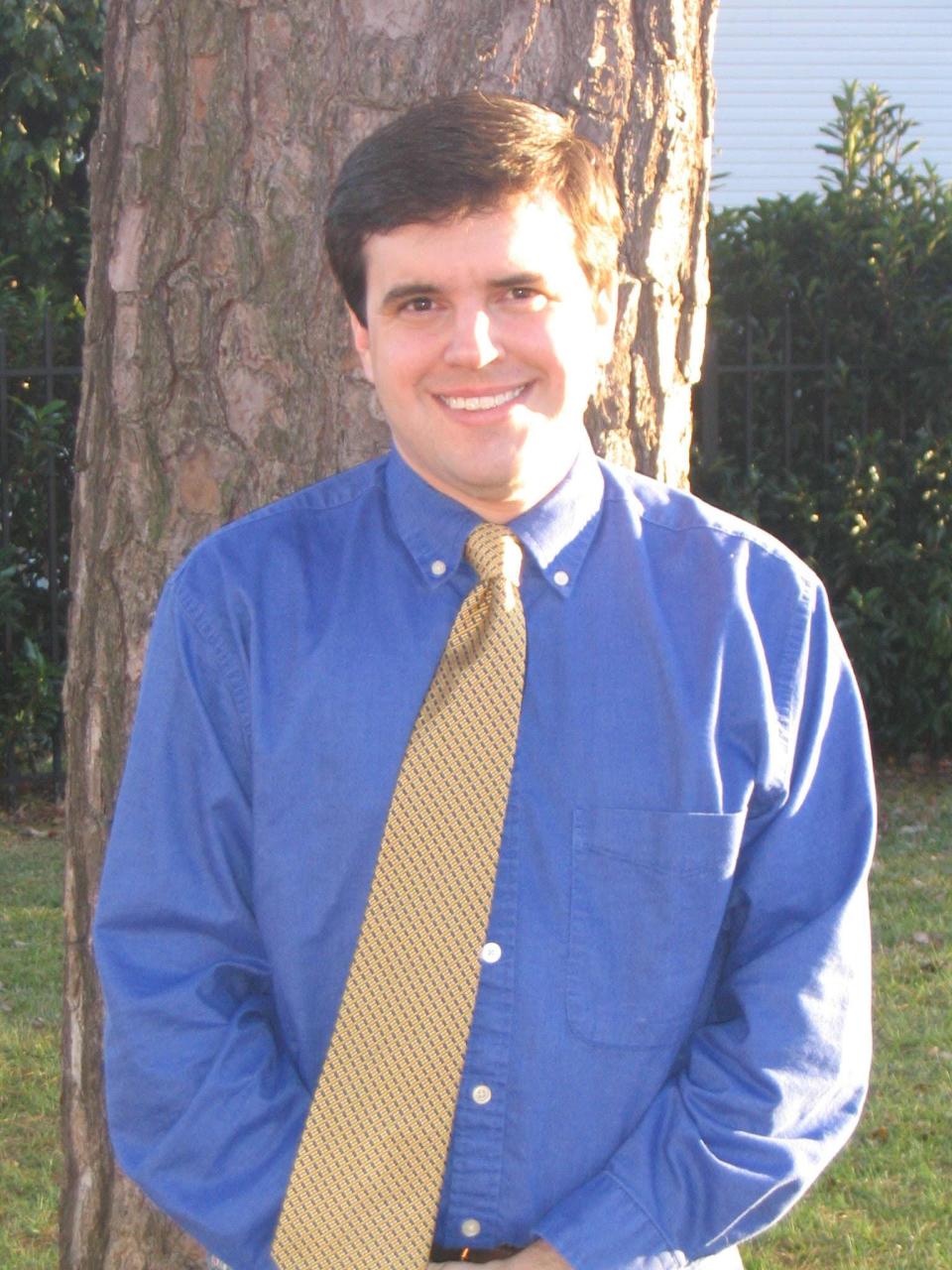Bridges: Belaunde lived interesting life from Texas to Peru
- Oops!Something went wrong.Please try again later.
Texas universities have produced many interesting political figures. Perhaps one of the most unusual journeys was that of University of Texas graduate Fernando Belaunde.
Belaunde earned a Texas architectural license, became a noted architect, and was twice elected president of Peru, surviving a military coup in the process.

Fernando Belaunde Terry was born in Peru in 1912 into a prominent family. His father had been a professor and prime minister, and his great-grandfather had been president of the country.
As a child, and for most of his life, he would be caught up in the chaos of South American politics. When the military overthrew the civilian government in 1924, Belaunde and his family fled the country in a panic.
They soon settled in France. In 1930, his father got a job as a professor at the University of Miami, the family moved to Florida, and Belaunde began taking architecture classes there.
After a few years at the University of Miami, Belaunde wanted a better architectural school. In 1935, he enrolled at the University of Texas. He honed his skills as he learned from the most respected architectural minds in the South. He soon graduated with a bachelor's degree and earned a Texas architectural license.
After finding work in Mexico as an architect, he left Texas. Shortly afterward, he returned to Peru and began publishing a noted magazine on architecture and began designing houses. He soon became a renowned consultant on housing issues and eventually became a professor of architecture and urban planning by 1943. He was elected to the national congress in 1945 on a reform ticket. But the congress was shut down when yet another dictator came to power in 1948.
When the military allowed elections in 1956, he attempted to run for president on the new party ticket of the New Front of Democratic Youth. The military would not give up power easily. They refused to let him onto the ballot and engineered the election toward their own hand-picked successor. After leading a series of protests, he was finally allowed onto the ballot but finished a distant second. He and his supporters soon founded a new political party, the Popular Action Party. Popular Action was meant to be a centrist party by the standards of Peru, between the extremes of the handful of elites and military juntas that had previously controlled the economy and the political system and the extremists such as the socialists and the communists. The party advocated free market reforms, economic development, and anti-corruption measures.
Belaunde won the 1963 presidential election with 39% of the vote in a deeply divided contest. He immediately began working to expand college education opportunities across the country, allowed the return of free municipal elections, and pushed for new agricultural and business development. He also instituted a construction program for new highways to be built into the most remote parts of Peru. But in spite of his successes, his popularity dropped with a series of economic crises in 1967 and 1968. The situation was made even worse with a vastly unpopular settlement with a Standard Oil subsidiary to return control of Peruvian oil production to Peru. With his unpopularity increasing among the public, the military again took control. In October 1968, Belaunde was forced from office by the army.
He was forced to return to the United States, fearing for his life.
He spent the next several years teaching architecture at Harvard University and George Washington University. The Peruvian military proved completely inept at running the economy and agreed with civilian politicians to allow a new constitution and for free elections in 1980. Belaunde returned to Peru and won the presidential election with 45% of the vote in a divided field with 14 other candidates.
However, the Peru that Belaunde returned to was very different. Peru, like most of Latin America, was devastated by years of unrest and dictatorships in the 1970s that left deep economic and social scars. Though he was able to complete important and popular highway projects, he was unable to do much more.
During the Falkland Islands War between Argentina and Great Britain in 1982, he attempted to broker a peace agreement between the two.
The plan, however, was rejected by Argentina’s military dictators, who subsequently lost the war with Britain and were overthrown. However, Peru’s economic problems were only accelerating. The economic problems caused by the dictatorship of the 1970s worsened, with increases in inflation and unemployment and declines in income. Foreign debt increased sharply. A series of weather disasters wrecked the fishing and agricultural industries. Unrest increased as a result, leading to communist uprisings in southern Peru.
Belaunde declined to run for re-election in 1985, and his Popular Action Party was dealt a devastating defeat. He served in a ceremonial position in the Peruvian Senate until 1992 when the position was abolished and he retired. He died in 2002 at the age of 89.
Ken Bridges is a writer, historian and native Texan. He holds a doctorate from the University of North Texas. Bridges can be reached by email at drkenbridges@gmail.com.
This article originally appeared on Lubbock Avalanche-Journal: Ken Bridges Belaunde lived interesting life from Texas to Peru

